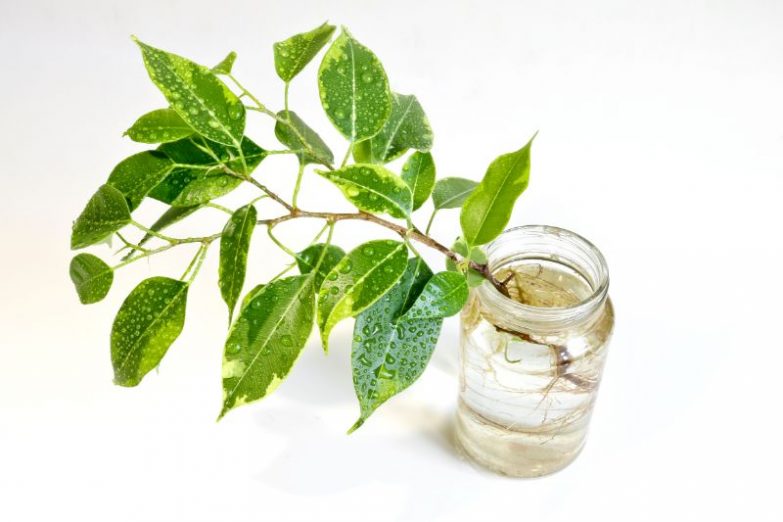The Weeping Fig (Ficus benjamina) is an elegant houseplant that is popular for its beautiful foliage and generally simple care requirements. Weeping Fig propagation is a great way to multiply your collection or take cuttings from a sickly plant and is thankfully very simple to do.
Weeping Fig propagation is best done by growing stem cuttings in soil or water, but they can also be propagated by air layering. Water and soil propagation have a higher success rate than air layering. It’s essential to watch the cuttings closely as they develop, particularly during the early stages of their growth.
Knowing the proper technique for taking and caring for your cuttings can mean the difference between failed propagation and a healthy, thriving plant. Let’s look at the finer details of these propagation methods.
Propagating Weeping Fig In Water
Though typically reserved for vining plants, it is possible to propagate a Weeping Fig in water. Stem cuttings will grow readily in water and you can watch the roots grow, so you’ll know exactly when they are ready to pot up into their own pots.
Growing cuttings in water is the easiest method of Weeping Fig propagation. It reduces the risk of the cuttings wilting, but does increase the risk of stem rot. Water propagation is typically a little slower than planting your cuttings directly in soil, but is so easy, and is a great way of using the cuttings after pruning.
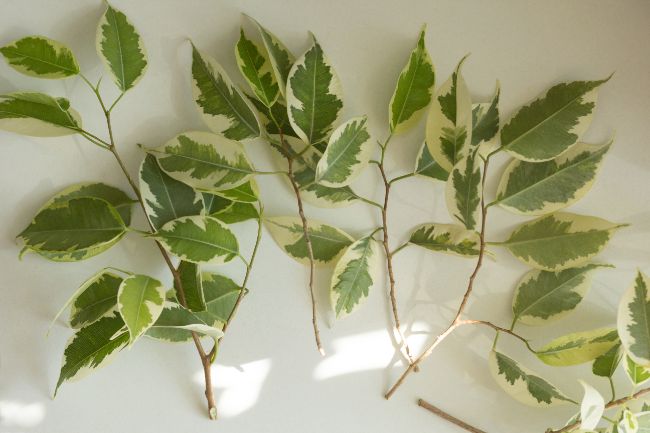
How To Propagate In Water
- Firstly, on the parent plant, select the stem you wish to take a cutting from. Ideally, you should choose a stem that needs to be pruned already. A cutting of about 4-6 inches in length is perfect.
- Cut just below a node on the stem with a sharp and sterile pair of pruners. A node is a key segment of a branch that contains the right genetic coding to grow a new root system.
- The nodes are not that obvious on Weeping Figs, so it isn’t important to get this step right so long as there are a few leaves left on the cutting.
- Remove any leaves on the bottom 2-3 inches of the cutting, leaving at least two pairs of leaves towards the tip of the stem. Removing excess leaves will reduce water loss through transpiration, and reduce the risk of your cutting wilting.
- Place the cutting in a glass jar full of water, putting it in a warm, bright location that receives indirect sunlight. Importantly, where some other plants do better with rooting hormone to assist with the initial stages of propagating, Weeping Figs are fine without it.
- A major problem that water propagation brings is stem rot. Surprisingly, water is not the main culprit in these instances, rather fungi and other pathogens.
- This is a common issue for most plants but is accelerated by water propagation process as water provides an ideal environment for these pathogens to thrive.
- The remedy is to ensure that all equipment is thoroughly cleaned prior to cutting and make sure the water is as sterile as possible. This limits the chance of passing harmful bacteria onto the cutting in the process, ensuring it has the best chance of thriving.
- When the cutting’s roots have grown around 4 inches, move the plant from the jar to a planter filled with fresh soil.
- Continue to water regularly and provide good care conditions. Read my guide to Weeping Fig care for more general tips to keep your Weeping Fig (Ficus benjamina) healthy.
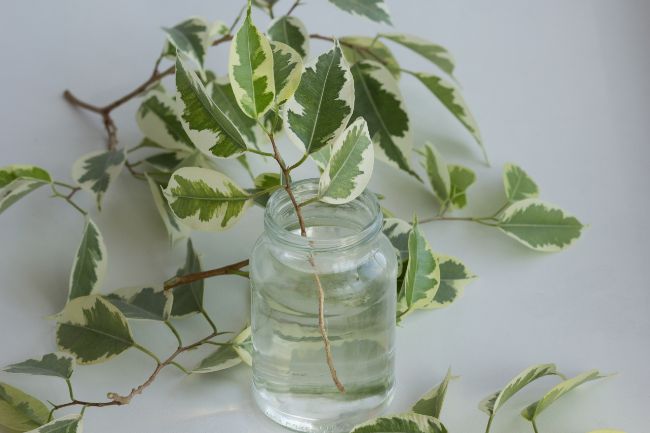
Propagating Weeping Fig In Soil
Another way to grow a new Weeping Fig from a cutting is through planting it directly in the soil. This method removes the need to pot the plant later on, and successful cuttings tend to establish quicker than when propagating in water. I generally find that the success rate of Weeping Fig propagation is slightly lower in soil compared to water.
How To Propagate In Soil
- You will first need to prepare the area or pot that you are going to plant your cutting in. An equal mix of peat, perlite, and coarse sand is my preferred potting mix for propagating Weeping Fig plants. Water the mixture until moderately moist all the way through.
- Following the same procedure laid out in water propagation, take a cutting of around four to six inches from the parent plant, making sure it has the right amount of leaves to grow in the early stages.
- Make a hole in your potting mixture, deep enough to hold the cutting securely. A pencil or skewer is a good tool for the job. Press the soil firmly around the cutting and water again lightly to ensure the soil is nicely moist.
- Find a location for your cutting where it will receive bright, indirect sunlight, warm temperatures, and high humidity. Consider covering the pot with plastic to raise humidity and prevent wilting.
- Check the cutting every 1-2 days and lightly water the soil to ensure it stays consistently moist, without getting too soggy. If mold develops on the soil surface or on the leaves, reduce humidity by leaving the pot uncovered intermittently.
- If you have grown multiple cuttings in the same pot, you should aim to repot into separate pots after approximately 4-6 weeks.
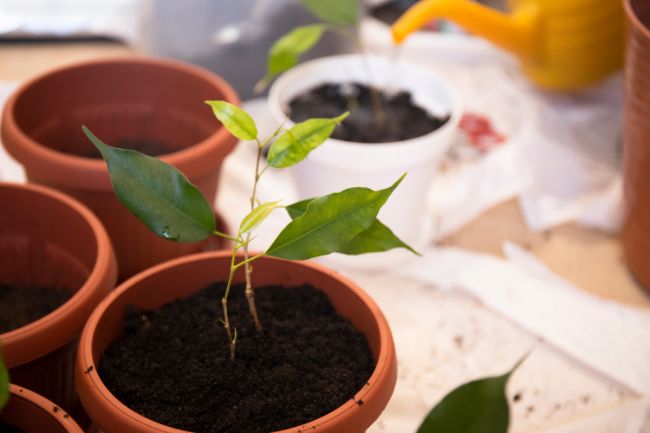
Propagating Weeping Fig By Air Layering
Air layering is a less well known form of propagation, yet it is simple and accessible to even the most novice of gardeners. Rather than taking cuttings from the parent plant, air layering involves growing a new root system from a cut in the stem of the parent plant.
Surprisingly, air layering often occurs naturally. In specific conditions, a plant that’s wounded will begin rooting, becoming one plant with two root systems. After some time, the new root system will be ready to be replanted and continue growing as a separate plant.
How To Propagate By Air Layering
In general, it is best to try air layering your Weeping Fig any time from spring until late summer, as this is when the plant will be growing most strongly.
- Find a suitable branch on the parent plant. What you’re looking for is a stem approximately a quarter inch in diameter with many healthy leaves. Measure 12 inches from the tip of the stem to identify the site for the incision.
- Using a clean utility knife, cut a third of the way through the stem. Further open the cut by bending the stem slightly, being careful not to weaken the stem too drastically.
- Pack the cut with moistened sphagnum moss or peat so that the cut site is completely covered. Wrap the moss with a layer of clear plastic, and secure the plastic with electrical tape on both ends and along the seam.
- Protect the stem from dehydration by keeping the branch out of direct sunlight. Water the plant regularly and ensure the plastic-covered moss remains moist at all times. Maintain high humidity and provide otherwise good general care of your plant.
- After about 3-4 weeks, the layered branch will be sprouting roots. Once there are multiple roots of 1-2 inches in length at least, you can remove the plastic and sphagnum moss or peat from around the roots and cut the stem completely below the new set of roots.
- Pot the stem in a container of moist potting mix. Place it in a bright area where your Weeping Fig will receive indirect sunlight.
This method of Weeping Fig propagation has a lower success rate than propagating cuttings in water or soil. Where it is of great benefit is in being able to propagate larger cuttings, leading to larger plants in less time.
The most common cause of failure is dehydration of the moss, so take care to check on this at least every other day. There is no major loss to simply select a different stem, or parent plant if needs be, and attempt the procedure again.
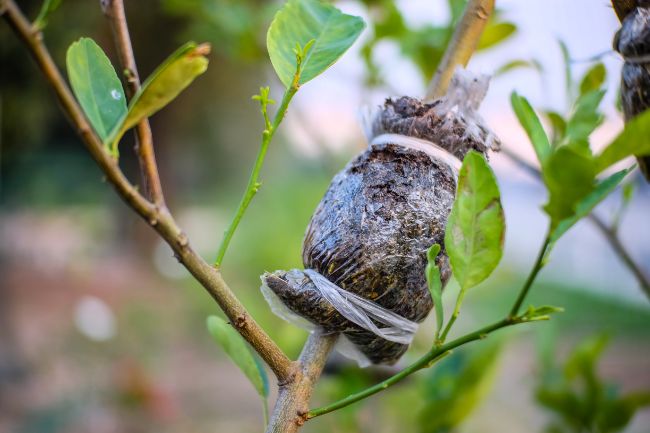
Caring For Your Newly Propagated Plants
Weeping Figs are resilient plants, often praised for their tolerance of poor growing conditions. Although prone to leaf drop for many reasons, they are generally easy to care for and will develop new foliage quickly in most situations to replace lost leaves.
Tending for a newly propagated plant is a little more difficult than looking after a mature plant, so relate it to caring for a baby. You will need to take extra care with watering, as it will be less able to cope with either overwatering or underwatering. Higher humidity is also preferred for newly propagated plants, as this will reduce the risk of wilting.
Another thing to keep in mind is just how sensitive Weeping Figs are to light. New plant owners are often distressed when their Weeping Fig loses its leaves after being moved.
This is no reason for alarm, rather the old leaves were accustomed to the light levels of the previous placement, and the plant prefers to grow a new leaves that will be adjusted for the new levels of light in its new position (source).
Final Thoughts
Propagating a new Weeping Fig (Ficus benjamina) is not a daunting task once you become familiar with the process. It provides a fun way to share your plant with others, expand your collection, or grow a new healthy plant from one that is looking a little worse for wear.
Weeping Fig propagation in water or soil is so easy that you should give it a go the next time yours needs a little pruning. Air layering is a fascinating process and so rewarding and fun. Just make sure to give your little cuttings plenty of TLC to help them grow strong and healthy. If you’d like to learn more about propagating houseplants, you can read my complete guide to houseplant propagation.

